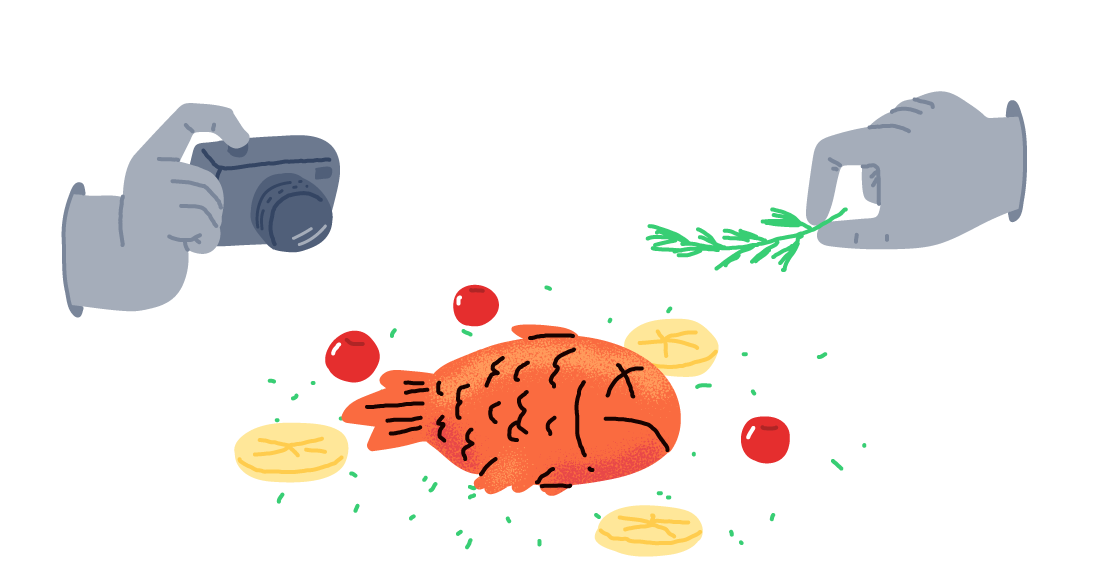When it comes to taking food images for your food blog, you need to know where to start. A good blog about food is rich in content, vibrant with imagery and generally upbeat in nature. Whether you are offering people wonderful recipes to try or you are creating an information site that looks to help people wane off things like sugar and salt, you will find that food pictures are vital.
When you are trying to sell food – something we see with our eyes – you need to be visually impressive. You have to speak to the stomach, if you will. However, that is much easier said than done. To do that, you need to understand the best way to snap food pictures in a way that ensures it is 100% appealing to the reader.
So, how can do you go about doing that? What food photography tips can help you pay off?
Natural light is your best friend
When taking quality food photos, you need to be very appreciative of the power of natural lighting. You can use synthetic lighting if you wish, but always try and take your photos during the daytime. Natural light shows it off in a more optimistic nature, and the brighter more general appeal of the day makes it much more likely to be useful.
Always try and stay within the ‘golden hour’ to shoot – it’s the time of day when you can get that perfect blend of sharpness, appeal and general quality. Also, many choose to stick rigidly to the kitchen when snapping food photos but that does not have to be the case.
Instead, you could very easily find the spot with the best quality of lighting that you can. Natural lighting is very important and can go a very long way to making sure you can see changes to food image quality. Thanks to catching food outside, for example, you can use a different blend of colors and natural lighting to capture a food that might not have looked so great otherwise.
Make props work for you
Another part of food images that people tend to put very little stock in – for reasons we cannot understand – is props and general styling. Use some cooking ingredients as little props to help populate the image and add a bit more depth to it. For example, scatter some powder sugar or some flour around the table to add that “just finished” look to the image. Make sure that you use a neutral background, too, as it’s less likely to cause a frustrating visual clash.
Keeping this in mind, you should always look to make the image look as natural as possible. Everything being super-clean and tidied up right after cooking is quite unlikely, so don’t worry about having a bit of that natural ‘mess’ around the cooking area still present.
Also, One the most well-known food photography tips is adding oil to your food, as it adds that glistening freshness. A touch of water into some herbs, too, can give them that extra injection of glistening, artistic quality. Use smart items like spoons to try and lead the reader’s eyes to the primary subject – props are excellent when used right.
Get used to your equipment
All food images that you take will play an absolutely essential role in making sure that you have a high-quality food blog. To get good images, you need to be prepared to invest in some quality cameras and photography equipment. Get rid of auto settings for once and just experiment a little; if you are interested, you can easily connect with a food photographer online and perhaps pay them a small fee to consult and rate your images to help you improve.
Make sure you use a tripod for all shots, as it improves sharpness. Also, get a large white surface to help make sure light is reflected positively onto the food. If you want a subtler image, then use a blackboard to help reduce the lighting if you need to.
Also, make use of studio lights and softboxes if you want to create the most appealing image that you can. You should be looking to make sure that your food images come with their own style; with a particular use of mood to help create either more sombre, serious imagery or something a bit more optimistic and generally upbeat.
Editing and blogging
Now, to make the most of your food images you need to be ready to make incremental but very important changes. For example, invest in tools like VSCO, Snapseed or – if you have the funds – Adobe Lightroom. Using these, you can make small and specific editorial adjustments to all of your food pictures.
From using small and incremental changes to help improve the quality of the image to ensuring you are left with a much more finely tuned finish, you can find that editing and blogging are vital to really improving the quality of the image as expected.
Also, make sure that your blogging itself is all done on a crisp, clean and suave website. If you need a good food blog layout that isn’t going to take away from the images and never become the protagonist, you should look to use this Testina WordPress theme.
With it, you can see a big difference in how your imagery looks and comes across. Your blog is much more likely to be an enjoyable read if people can easily navigate it and have their vision drawn to the right kind of sources.
In time, it can make a significant difference in how your food pictures are received.
Using the food photography tips above, you should find it much easier to snap convincing and high-quality food images that looks great. Your blog needs a digital appeal, so make sure that you deliver this visual appeal as soon as you possibly can do.



